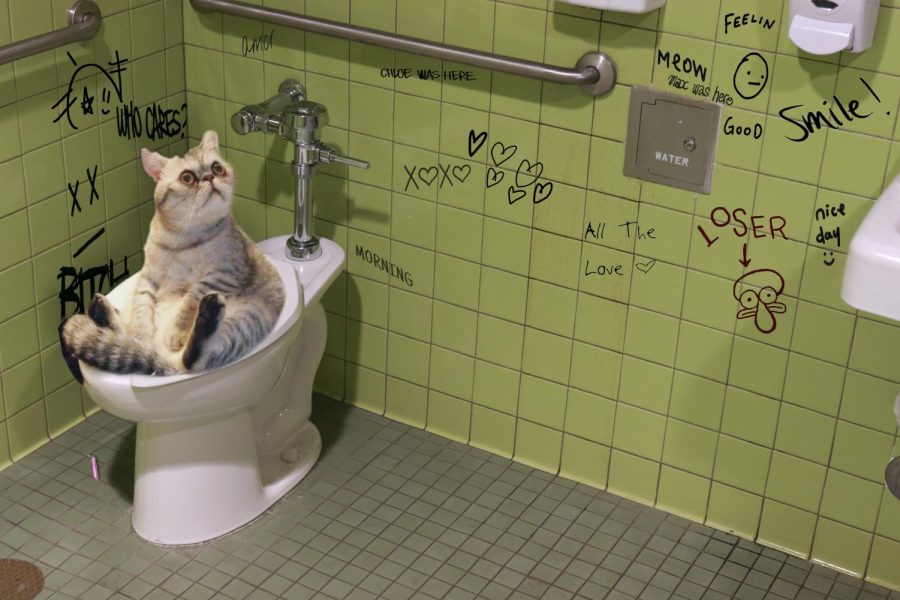Potential Issues of Flushing Cat Poop Down Your Toilet - Safeguard Your Pipes
Potential Issues of Flushing Cat Poop Down Your Toilet - Safeguard Your Pipes
Blog Article
This post following next pertaining to How to Dispose of Cat Poop and Litter Without Plastic Bags is pretty much enlightening. You should look it over.
Intro
As pet cat proprietors, it's vital to be mindful of how we deal with our feline buddies' waste. While it may appear hassle-free to purge cat poop down the toilet, this technique can have destructive consequences for both the setting and human health and wellness.
Alternatives to Flushing
Thankfully, there are more secure and more liable ways to deal with feline poop. Think about the complying with options:
1. Scoop and Dispose in Trash
The most typical technique of dealing with feline poop is to scoop it into a biodegradable bag and toss it in the garbage. Be sure to make use of a specialized litter scoop and throw away the waste promptly.
2. Use Biodegradable Litter
Opt for biodegradable feline clutter made from products such as corn or wheat. These clutters are environmentally friendly and can be safely dealt with in the garbage.
3. Bury in the Yard
If you have a lawn, take into consideration burying feline waste in an assigned location far from veggie yards and water sources. Be sure to dig deep sufficient to avoid contamination of groundwater.
4. Set Up a Pet Waste Disposal System
Purchase a pet dog garbage disposal system especially made for pet cat waste. These systems make use of enzymes to break down the waste, lowering smell and ecological effect.
Health Risks
In addition to ecological worries, purging cat waste can also posture health and wellness dangers to humans. Pet cat feces may contain Toxoplasma gondii, a bloodsucker that can trigger toxoplasmosis-- a possibly serious illness, specifically for expecting females and individuals with damaged immune systems.
Ecological Impact
Flushing pet cat poop presents harmful pathogens and parasites into the water system, presenting a substantial threat to water ecosystems. These pollutants can adversely impact marine life and concession water top quality.
Conclusion
Accountable pet dog ownership prolongs beyond supplying food and sanctuary-- it likewise includes correct waste monitoring. By avoiding purging pet cat poop down the commode and going with different disposal approaches, we can lessen our ecological impact and shield human wellness.
Why Can’t I Flush Cat Poop?
It Spreads a Parasite
Cats are frequently infected with a parasite called toxoplasma gondii. The parasite causes an infection called toxoplasmosis. It is usually harmless to cats. The parasite only uses cat poop as a host for its eggs. Otherwise, the cat’s immune system usually keeps the infection at low enough levels to maintain its own health. But it does not stop the develop of eggs. These eggs are tiny and surprisingly tough. They may survive for a year before they begin to grow. But that’s the problem.
Our wastewater system is not designed to deal with toxoplasmosis eggs. Instead, most eggs will flush from your toilet into sewers and wastewater management plants. After the sewage is treated for many other harmful things in it, it is typically released into local rivers, lakes, or oceans. Here, the toxoplasmosis eggs can find new hosts, including starfish, crabs, otters, and many other wildlife. For many, this is a significant risk to their health. Toxoplasmosis can also end up infecting water sources that are important for agriculture, which means our deer, pigs, and sheep can get infected too.
Is There Risk to Humans?
There can be a risk to human life from flushing cat poop down the toilet. If you do so, the parasites from your cat’s poop can end up in shellfish, game animals, or livestock. If this meat is then served raw or undercooked, the people who eat it can get sick.
In fact, according to the CDC, 40 million people in the United States are infected with toxoplasma gondii. They get it from exposure to infected seafood, or from some kind of cat poop contamination, like drinking from a stream that is contaminated or touching anything that has come into contact with cat poop. That includes just cleaning a cat litter box.
Most people who get infected with these parasites will not develop any symptoms. However, for pregnant women or for those with compromised immune systems, the parasite can cause severe health problems.
How to Handle Cat Poop
The best way to handle cat poop is actually to clean the box more often. The eggs that the parasite sheds will not become active until one to five days after the cat poops. That means that if you clean daily, you’re much less likely to come into direct contact with infectious eggs.
That said, always dispose of cat poop in the garbage and not down the toilet. Wash your hands before and after you clean the litter box, and bring the bag of poop right outside to your garbage bins.
https://trenchlesssolutionsusa.com/why-cant-i-flush-cat-poop/

As a passionate person who reads on How to Dispose of Cat Poop and Litter Without Plastic Bags, I figured sharing that piece of content was necessary. Those who liked our blog post plz remember to pass it around. We love reading our article about Can You Flush Cat Poop Down The Toilet?.
Click Here Report this page